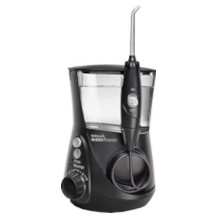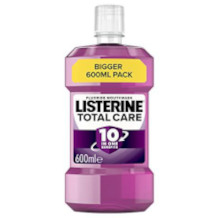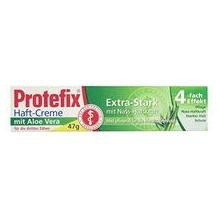Sonic toothbrush purchasing advice: how to choose the right product
- What you need to know
- Sonic toothbrushes are a special type of electric toothbrush with an oval brush head and strong vibration.
- They clean the teeth thoroughly and gently.
- Sonic toothbrushes achieve up to 60,000 vibrations per minute. That is 100 times more than you can produce with a manual toothbrush.
- Important purchase criteria include the vibrations per minute, the available cleaning programs, and the battery life.
- Practical additional features are a timer, different cleaning programs, and a pressure control.
Optimal dental care
Clean, well-groomed teeth are not only important for our appearance, but, above all, for our health. Our oral health has a significant influence on our entire body. Studies have shown, for example, that there is a correlation between gum inflammation and cardiovascular disease. This makes regular and thorough dental hygiene all the more important. An essential part of this is brushing your teeth.
What is a sonic toothbrush?
In addition to simple manual toothbrushes and classic electric toothbrushes with oscillating-rotating brush heads, you can also find sonic toothbrushes on the market. By contrast to oscillating-rotating toothbrushes, models with sonic technology do not have a round but an elongated brush head, similar to that of a typical manual toothbrush. They are also powered by a sonic transducer rather than an electric motor. It ensures that the brush head vibrates at a relatively high frequency of 250 to 300 Hz. The high-frequency vibration of the sonic toothbrush causes the individual bristles to vibrate, which in turn mechanically clean the teeth. Depending on the model, 25,000 to 60,000 vibrations per minute are generated. In comparison, a manual toothbrush produces an average of 600 brush movements per minute. With a sonic toothbrush, you can clean your teeth way more thoroughly than with an ordinary manual toothbrush.
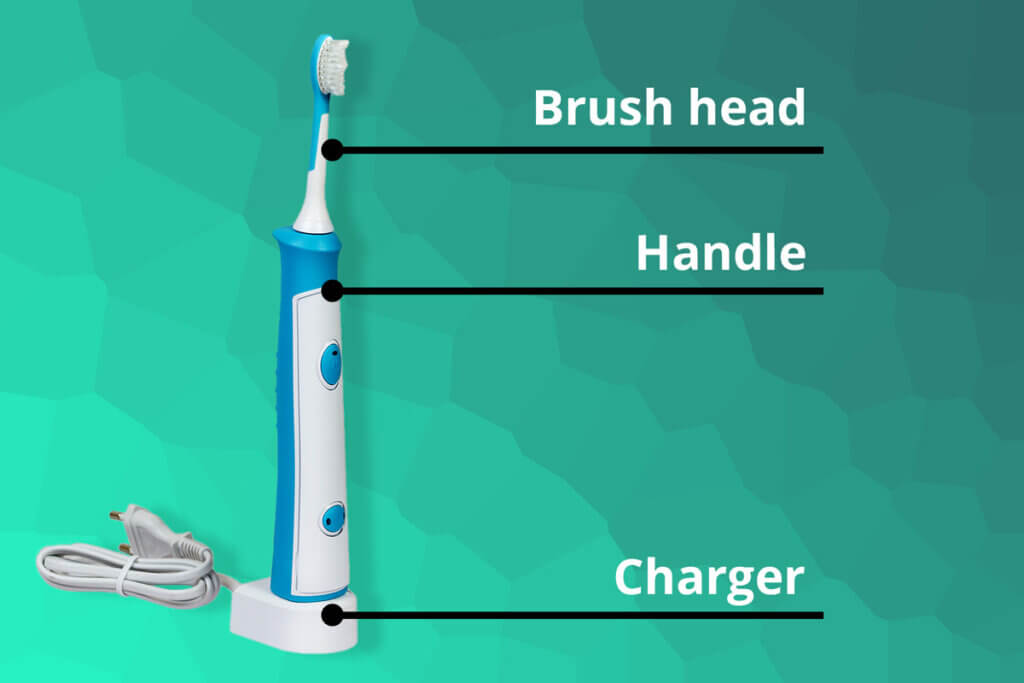
In terms of its structure, the sonic toothbrush does not differ from the classic electric toothbrush. It also consists of a handpiece on which the controls are located, a charging station, and a brush attachment. Similarly to a manual toothbrush, you need to replace the attachment brush regularly, about every three months, to ensure hygienic brushing.
The different cleaning technologies
Electric toothbrushes generally clean the teeth more thoroughly than a manual toothbrush would. However, not all electric toothbrushes are the same. The different models can be divided into rotating-oscillating toothbrushes, sonic toothbrushes, and ultrasonic toothbrushes. The three types differ mainly in the frequency of their vibrations and the resulting cleaning effect.
Healthier teeth thanks to electric toothbrushes
In a long-term study, scientists from the University of Greifswald, Germany, examined the connection between electric toothbrushing and periodontitis, caries, and the number of remaining teeth. They were able to show that electric toothbrushes strongly correlate with good oral health. They are associated with a reduced progression of periodontitis and more preserved teeth.
Oscillating-rotating toothbrushes: perfect for getting started
To brush your teeth, hold the brush head against each tooth for a few seconds with a little pressure. This way you clean your teeth very thoroughly, but there is a risk of injury to the gums due to the pressure. Rotating-oscillating toothbrushes, also called round-head toothbrushes or rotating toothbrushes, are the classics among electric toothbrushes. They are characterized by their small, round brush head, which is driven by an electric motor. The motor causes the brush head to rotate alternately clockwise and counterclockwise – about 4000 to 8000 times per minute. That is about ten times as often as a manual toothbrush. The biggest strength of round-head toothbrushes lies in removing plaque. However, the round brush head cannot reach the interdental spaces as well.
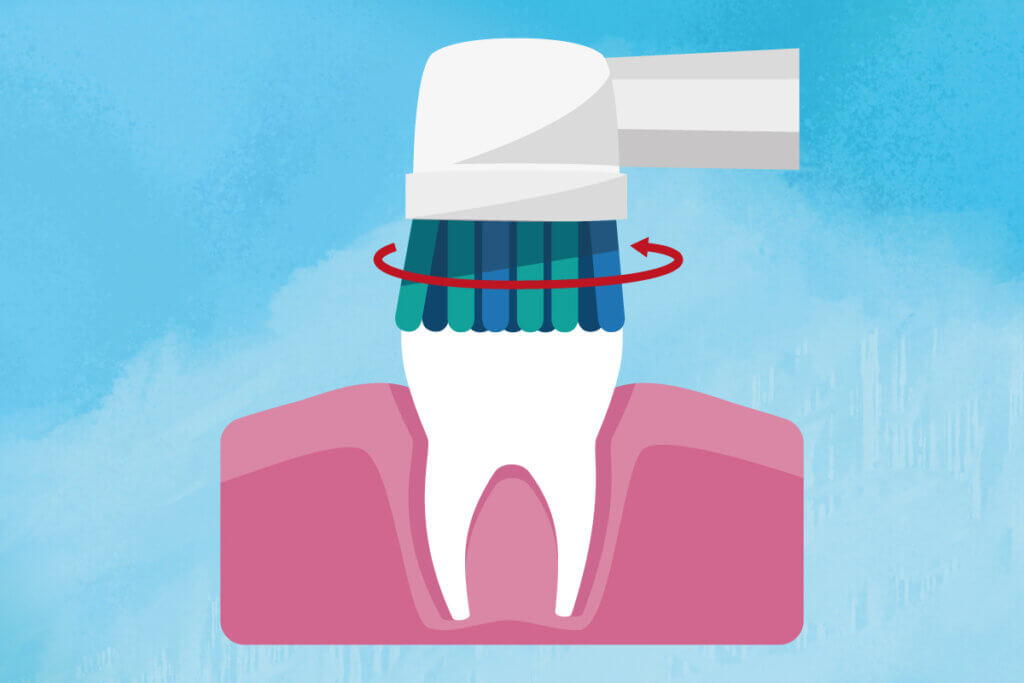
Compared to ultrasonic and sonic toothbrushes, round-head toothbrushes are rather affordable. Simple entry-level models are already available for under $10. Expensive models such as the ORAL-B Genius X Luxe Edition can cost up to $280.
Advantages
- Affordable entry-level models
- Easy to use
- Thorough cleaning
Disadvantages
- High pressure poses risk of gum damage
- Cleaning required for each tooth individually
Ultrasonic toothbrushes: the high-end variety
The terms ultrasonic toothbrushes and sonic toothbrushes are often used synonymously. However, they are not the same. It may be true that they look similar. However, unlike sonic toothbrushes, ultrasonic toothbrushes work with real ultrasound. This technology enables up to 96 million bristle vibrations per minute. Unlike sonic and rotary toothbrushes, it is not the bristles that are responsible for cleaning the teeth, but the ultrasound.
If oscillating-rotating toothbrushes are considered the entry-level models of electric toothbrushes, ultrasonic toothbrushes are the high-end variety. This applies to both the cleaning performance and the price. You should expect to spend at least $100 for the initial purchase. In addition, there are high follow-up costs due to cost-intensive brush heads and the special toothpaste. For example, you will have to pay at least $5 for a 75mm tube. When using the brush, you must bear in mind that you need a special toothpaste without abrasive cleaning particles. The toothpaste establishes contact between the brush head and the teeth. In combination with the toothpaste, the ultrasound creates thousands of small foam bubbles which, when they burst, remove the impurities and bacteria on and between the teeth. This type of brushing is particularly gentle not only on the gums but also on the teeth, as there is no mechanical brushing action. In addition to using the right toothpaste, you must remember not to move the ultrasonic toothbrush. Instead, you must hold it over the tooth surface for about ten seconds at a time. Especially when switching over from a manual toothbrush, this is very unfamiliar at first and requires some getting used to.
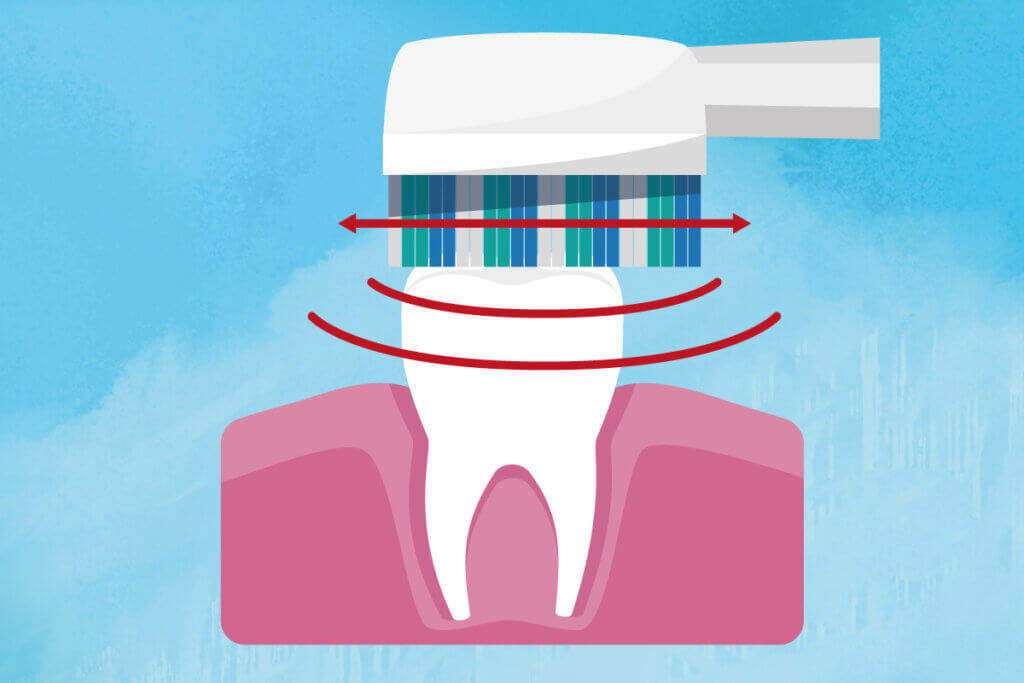
Advantages
- Very thorough cleaning of teeth and interdental spaces
- Particularly gentle cleaning
Disadvantages
- High purchase and follow-up costs
- Special toothpaste required
- Takes some getting used to
Sonic toothbrushes: the happy medium
A sonic toothbrush is the happy medium between the oscillating-rotating toothbrush and the ultrasonic variety. The vibration of the brush head is nowhere near the frequency of ultrasonic toothbrushes, but at 30,000 to 60,000 vibrations per minute, it is still about ten times higher than that of classic electric toothbrushes.
Thanks to the faster brush head movements, the sonic toothbrush cleans the teeth even more thoroughly than a rotary toothbrush. In addition, the fast vibrations have a hydrodynamic effect. This means that they increase the flow speed of the toothpaste-saliva mixture so that it is pushed through the hard-to-reach interdental spaces and cleans them.
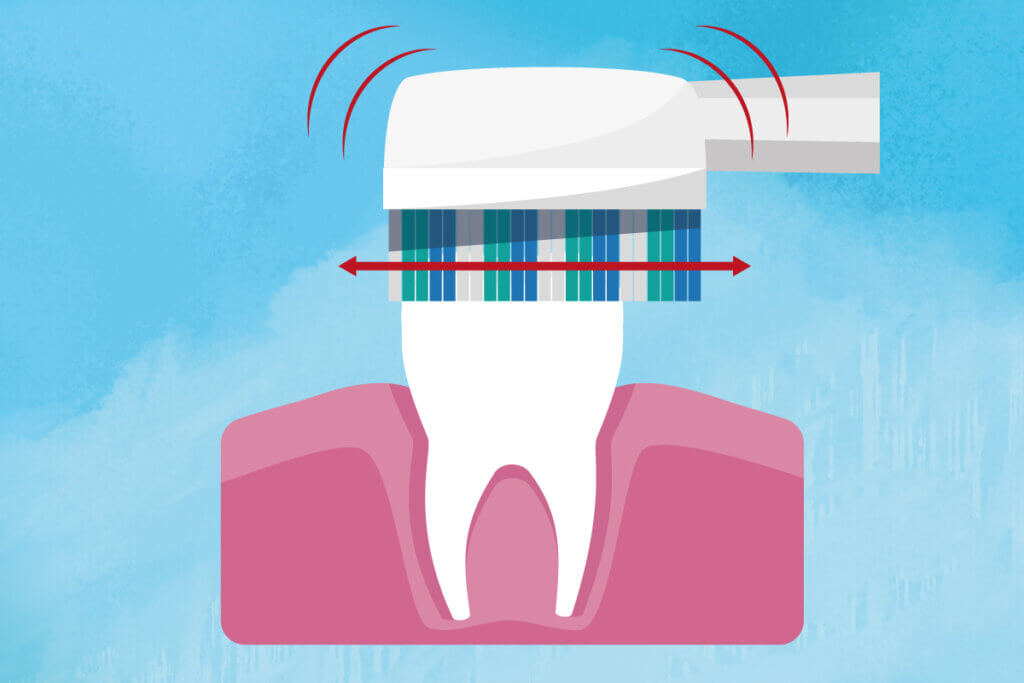
Unlike the ultrasonic toothbrush, with a sonic toothbrush you do not need any special toothpaste or brushing technique. You let the elongated brush head glide over the tooth surfaces with little pressure. In this way, you clean your teeth not only more thoroughly, but also more gently than with a manual or rotary toothbrush.
In terms of price, sonic toothbrushes are also in between the rotary and ultrasonic toothbrushes. Inexpensive models are available from around $40, about four times the price of an inexpensive rotary toothbrush and less than half the price of an inexpensive ultrasonic toothbrush. For a high-priced sonic toothbrush, like the models in the Philips Sonicare DiamondClean series, you have to pay up to $200. Another advantage of sonic toothbrushes is that they use less electricity than rotary and ultrasonic toothbrushes and therefore need to be recharged less often.
Advantages
- Very good cleaning results
- Cleaning of several teeth at the same time
- Gentle on gums and teeth
- Low power consumption
Disadvantages
- Slightly higher price
- Loud vibration noise
Whom is a sonic toothbrush suitable for?
Sonic toothbrushes are a better alternative to manual and rotary toothbrushes because they are more thorough and gentle on the teeth. Since sonic toothbrushes exert little pressure, they are ideal for people who suffer from sensitive teeth, sensitive gums, or gum inflammation (periodontitis). Those who wear fixed braces also benefit from a model with sonic technology, as it allows them to thoroughly clean even the hard-to-reach areas. Even with a crown, bridge, or implants, you can use a sonic toothbrush without any problems. However, you should wait for the healing phase.
For children, dentists recommend brushing with a manual toothbrush until they are four years old. Some manufacturers offer sonic toothbrushes for children as young as two or three years old.
Special sonic toothbrushes for children
Sonic toothbrushes for children are characterized by a smaller, narrower handle that fits well in children’s smaller hands. The brush head is also slightly smaller than that of a sonic toothbrush for adults. In addition, children’s toothbrushes are usually equipped with additional features suitable for children, such as flashing lights that make brushing teeth more exciting.
Important purchase criteria
There are many differences between sonic toothbrush models on the market, such as vibration frequency, battery life, ease of use, and, of course, price. While cheaper models are usually limited to the basic functions, high-priced sonic toothbrushes often come with some additional features such as a timer or UV disinfection.
How fast does the sonic toothbrush vibrate?
The number of vibrations that the brush head completes in one minute is paramount for the cleaning performance of the sonic toothbrush. The faster the brush head and bristles vibrate, the more thoroughly they remove deposits from the teeth. On average, sonic toothbrushes achieve between 30,000 and 60,000 vibrations per minute. A sonic toothbrush should not vibrate less than 20,000 times per minute. Manufacturers usually state the number of vibrations in the product information in vibrations per minute. For example, the Oral-B Pulsonic Slim Luxe 4200 reaches more than 31,000 vibrations per minute, according to the manufacturer, while the Philips Sonicare DiamondClean HX9359/89 vibrates twice as fast at 62,000 vibrations per minute.
The type of brush head
Not only the shape and length of the brush head, but also the arrangement, number, density, length, and hardness of the bristles play a role in overall effectiveness. Many manufacturers, have different brush heads for special requirements in their range. These include, for example, the following:
- Brush heads with narrow and specially curved bristles for thorough plaque removal
- Compact brush heads with soft side bristles for healthier gums
- Dense, specially arranged bristles for whiter teeth
- Smaller brush heads with soft bristles for children
- Extra soft bristles for sensitive gums and teeth
- Extra long bristles for optimal cleaning of interdental spaces
- Flexible micro bristles for cleaning the tongue
Handling and handle
A good sonic toothbrush is easy and comfortable to use. This includes comprehensive operating instructions that explain all the important features. Usually, the operation of an electric toothbrush is not too complex but limited to one to three buttons for switching on and off, and for selecting the cleaning program.
An ergonomically shaped handle that sits comfortably in your hand is also important. With sonic toothbrushes for children, it has to be correspondingly smaller. A good sonic toothbrush can stand both with and without the charging station, and does not roll off the edge of the sink when you briefly place it there. Ideally, all parts of the toothbrush are easy to clean. Some models, such as the Philips Sonicare FlexCare Platinum, come with a UV disinfector for extra convenient and thorough cleaning. There are also stand-alone devices that you can use to clean the brush heads of various brands.
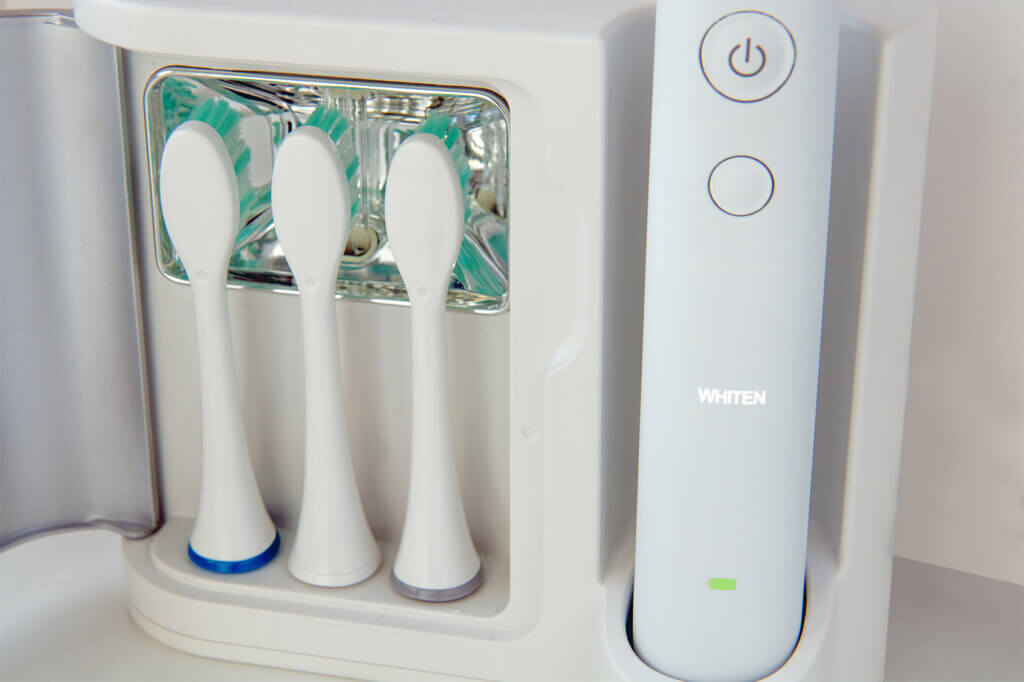
Disinfection with UV light
UV disinfection is suitable for combating germs on the brush head. The UV light kills microorganisms by damaging their DNA. Moreover, this type of cleaning leaves no chemical traces.
Battery life and charge indicator
Most modern sonic toothbrushes are rechargeable toothbrushes with a built-in lithium-ion battery, but there are also battery-powered models available. For the latter, the use of rechargeable batteries is recommended.
Rechargeable toothbrushes typically come with a charging station. When it comes to the battery, you should pay attention to the runtime and charging time when choosing your model. It usually takes between three and four hours to fully charge, and the runtimes vary greatly depending on the model. For example, the battery of the Phillips Sonicare EasyClean sonic toothbrush lasts up to 200 minutes when fully charged. If you use the brush three times a day for two minutes each, you can use it for around a month before it needs to be recharged. The sister model Sonicare ProtectiveClean vibrates twice as fast in comparison and accordingly consumes more energy, so that one charge is only enough for up to two weeks.
A long battery life is especially important if you want to take your sonic toothbrush on longer trips without having to carry the charger with you. Sonic toothbrushes that can be charged via a USB port are ideal for this purpose. A suitable micro-USB charger, e.g. for charging a smartphone, is usually in your luggage anyway. Another practical feature is a charge level indicator, usually an LED light that flashes to alert you to a low battery level.
Protecting the battery for a longer shelf life
Humid air and temperatures above 77 °F damage the battery and shorten its life. Therefore, you should ensure sufficient ventilation in the bathroom or store the device in another room.
What cleaning programs does the sonic toothbrush have?
Not only are there various brush heads for different needs, many sonic toothbrushes also come with several cleaning modes. The basic equipment includes a standard cleaning program that reliably removes food residues and plaque from your teeth. If your teeth or gums are sensitive, we recommend an additional sensitive care program for particularly gentle brushing. A gum massage program can also be useful in this case. Common cleaning programs, especially in higher-priced models, include a tooth whitening mode, a polishing program, a deep cleaning program, and a tongue cleaning mode.
Useful features and accessories
Especially higher-priced sonic toothbrushes are equipped with several additional features in addition to several cleaning modes. A very useful feature is the so-called pressure control. This is a sensor that senses how hard you hold the toothbrush against your teeth. If you press too hard, the motor stops or a warning signal sounds, depending on the model. A timer that signals when you have reached the optimum brushing time of two minutes is also useful. In addition, some sonic toothbrushes have a quadrant timer that tells you exactly how long you have to brush each half of the jaw (quadrant). Some models also tell you when it’s time to change the brush head.
Some manufacturers, for example Oral-B and Philips, even offer an app with their sonic toothbrushes to help you brush your teeth. For example, you can use the app to track and log your brushing time or record your brushing behavior and display missed spots.
A matching charging station is typically included in the scope of delivery. However, with sonic toothbrushes that can be charged via a USB connection, the charging cable is sometimes missing. In this case, some manufacturers assume that such a cable is available in every household. Some models also come with additional brush heads for changing and a pouch or sturdy travel case. In some rare cases, there is a UV cleaning station or an oral irrigator included in the scope of delivery.
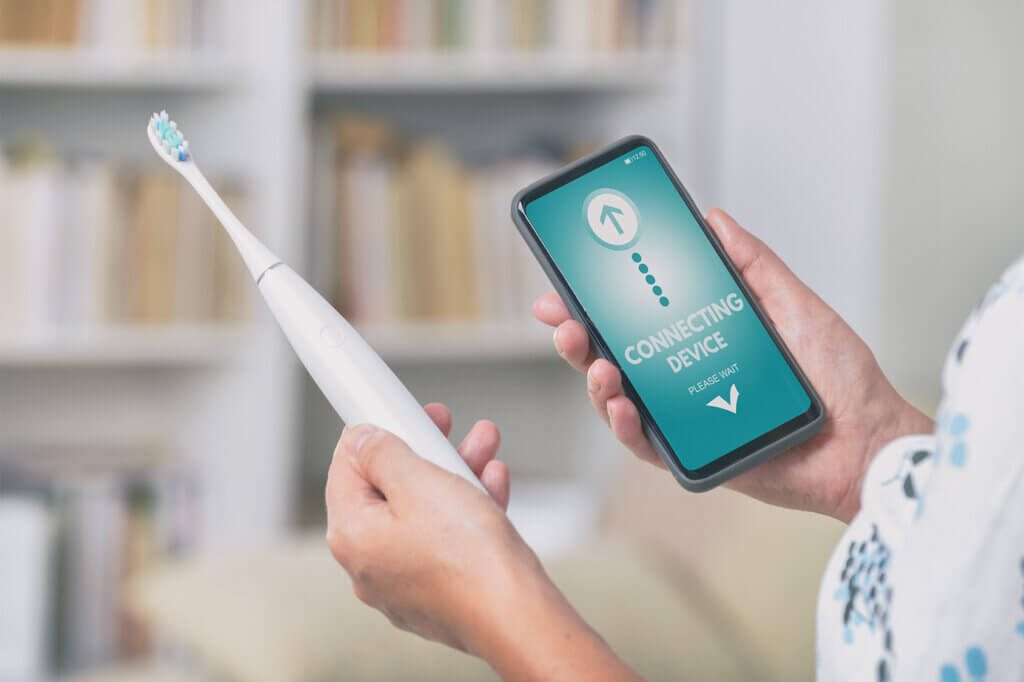
How much does a sonic toothbrush cost?
Sonic toothbrushes tend to be more expensive than rotary and cheaper than ultrasonic models. However, there can be a large price differences between the various models with sonic technology. Simple sonic toothbrushes without many frills, for example the Philips Sonicare EasyClean HX6511/22 or the Fairywill Electric Toothbrush, are available at around $40. In the mid-price segment, you will find sonic toothbrushes with some useful additional features such as different cleaning modes, a timer, and pressure control, for example the Oral-B Pulsonic Slim Luxe 4200, for $80 to $150. Luxury variants with numerous additional features and a high-end design, such as the Philips HX 9396/89 Diamond Clean in rosé-gold, are available for prices up to $200 or more.
Don’t forget the follow-up costs
When choosing your sonic toothbrush, you should bear in mind that you not only spend money on the toothbrush, but also have to buy replacement brushes regularly. The prices for replacement brush heads vary depending on the manufacturer and the type of brush. In general, standard brush heads are cheaper than special brushes. Depending on the brand, a standard brush costs between $2 and $5. Buying larger packs, such as ten instead of two brush heads, can save you money. There are also cheaper off-brand products for some toothbrushes. However, experience shows that these are of lower quality than the original toothbrushes.
How to use a sonic toothbrush
How much toothpaste do I use with the sonic toothbrush? How much pressure should or may I use? How do I keep my sonic toothbrush clean, and when is it time to change the brush head? The following tips will help you use your sonic toothbrush correctly.
What should I pay attention to when brushing with a sonic toothbrush?
- A dab of toothpaste is usually enough.
- Spread the toothpaste evenly in your mouth before brushing.
- Do not switch on the toothbrush until it is in your mouth and after you have spread the toothpaste.
- Do not scrub and apply little pressure. The toothbrush does most of the work itself.
- Get into the habit of brushing your teeth regularly so that you don’t forget any spots.
- Always brush from the gum to the tooth (from red to white).
- Brush each tooth for about three to four seconds.
- In total, the optimal brushing time is two to three minutes.
Cleaning the sonic toothbrush
Regular cleaning is necessary so that you can use your sonic toothbrush for as long as possible while still being hygienic. Before each brushing, it is recommended to rinse the brush head with water to remove any dirt. After each use, rinse the brush head thoroughly under running water. Then shake the brush gently several times so that the bristles are not too wet. Wipe the handpiece with a damp cloth so that no toothpaste residue collects there. Do not store the cleaned brush in a closed container, but in such a way that the bristles can dry properly, e.g. in a glass or free-standing on the corresponding charging station.
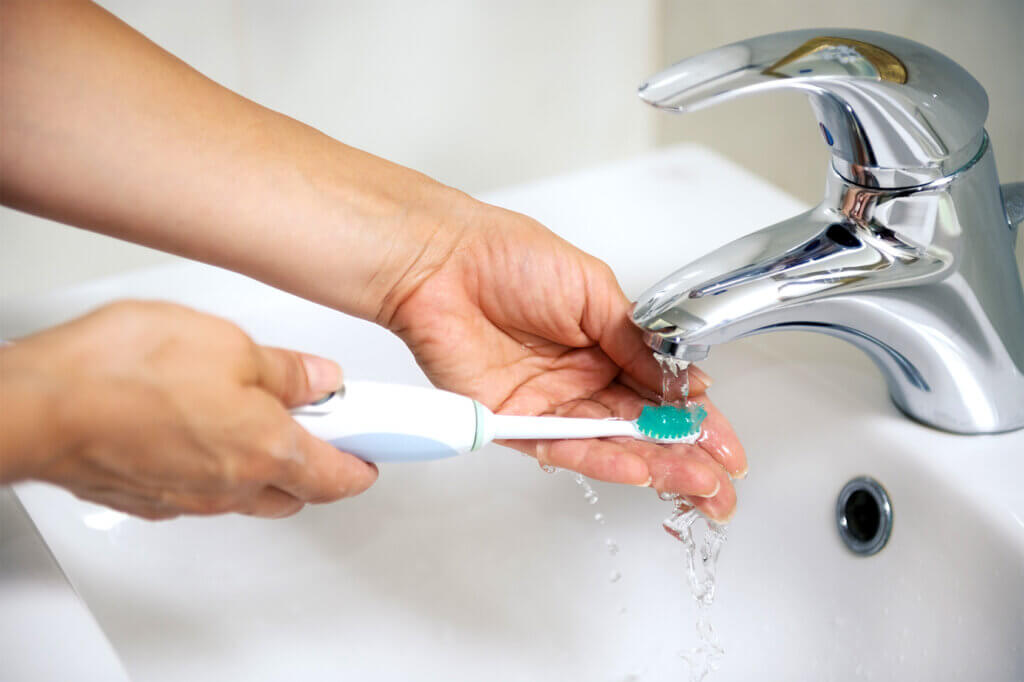
You should also clean your toothbrush more thoroughly at least once a week. To do this, remove the brush head from the handpiece and rinse the underside with warm water. You should also rinse the metal shaft on the handpiece onto which the brush is attached. Then, clean the entire handpiece with a damp cloth.
How often should I change the brush head?
For good oral hygiene, it is necessary to replace the manual toothbrush with a new one at regular intervals. This is partly because of germs and partly because the bristles wear down, which reduces the cleaning effectiveness. The same applies to electric toothbrushes. However, you don’t have to replace the entire toothbrush, but only the attachment brush. You should replace it about every three months, or, at the latest, when the bristles start to stick out in all directions.
General tips for healthy teeth
As the basis of oral and dental hygiene, brushing cannot be replaced by any other process. Experts recommend brushing your teeth for two to three minutes at least twice a day, ideally after each meal. In addition, the following tips will help promote and maintain the health of your teeth:
- Use toothpaste with fluoride to strengthen enamel and prevent tooth decay.
- Harden teeth with chewable foods such as apples and nuts.
- Chew sugar-free gum on the go after meals to clean teeth.
- Avoid sugary foods and drinks to reduce the risk of plaque.
- Have your teeth checked regularly by a dentist, ideally twice a year.
Sonic and ultrasonic toothbrushes have the advantage of cleaning even the hard-to-reach spaces between teeth. To be on the safe side, it is still advisable to use dental floss, an oral irrigator, or an interdental brush in addition to the toothbrush.
Popular manufacturers and models
Are you looking for a sonic toothbrush with special cleaning programs, extra features, or accessories? Below we present some popular models, manufacturers, and product series and present their special features.
Phillips Sonicare DiamondClean – the premium toothbrushes
Sonicare DiamondClean is a sonic toothbrush series by Philips that features a particularly flexible brush head for optimal plaque removal. Models in the series cost over $200 and are thus in the upper price segment. However, this is also reflected in their features. With 62,000 vibrations per minute, the brush head also vibrates comparatively quickly. DiamondClean brushes come with five cleaning programs:
- The standard Clean program
- The Deep Clean program
- The gum massage mode Gum Care
- The gentle Sensitive mode
- White mode for whiter teeth
According to Philips, the battery of the DiamondClean models lasts up to three weeks. You can charge the toothbrush in the toothbrush glass provided or on the go in the stylish travel case.
Philips Sonicare EasyClean – ideal for beginners
The Philips Sonicare EasyClean series does not offer quite as much luxury features as the DiamondClean models, but it is more affordable and optimized for the needs of beginners. Among other things, EasyClean toothbrushes come with a so-called Easy-Start function, with which you slowly get used to brushing with a sonic toothbrush. Over a period of 14 applications, the toothbrush slowly increases the brushing intensity. In addition to a standard cleaning program, a two-minute and a quadrant timer are also included. In terms of speed, EasyClean models are similar to DiamondClean toothbrushes: they also achieve up to 62,000 vibrations per minute. Priced at less than $100, EasyClean brushes cost less than half as much as DiamondClean models.
Oral-B Pulsonic Slim – slim and light brushes
The Oral-B Pulsonic Slim series is characterized by a very slim and light handpiece. This means that the sonic toothbrushes fit comfortably in your hand and are also ideal for travelling, as they do not add unnecessary weight to your luggage. Pulsonic Slim brushes are available in three versions:
- Pulsonic Slim 1100 with two cleaning modes and 27,000 vibrations per minute.
- Pulsonic Slim One with two cleaning modes and 31,000 vibrations per minute
- Pulsonic Slim Luxe with three cleaning modes and more than 31,000 vibrations per minute
All three versions have an integrated two-minute timer and a battery life of up to two weeks. With prices between $80 and $130, the Oral-B models are in the mid-price range.
Happybrush – sustainable materials and fair prices
The Happybrush brand focuses on effective cleaning, modern design, sustainable materials, and fair prices. The attachment brushes of the sonic toothbrush consist of 40% renewable raw materials, and the packaging is made exclusively of cardboard.
The current Schall Vibe 3 model comes with three cleaning modes:
- Normal: with 25,000 vibrations per minute and 100% power
- Sensitive: with 30,000 vibrations per minute and 80% power
- Polishing: with 30,000 to 40,000 vibrations per minute and 80 to 100% power
The Happybrush Vibe 3 is waterproof and, thanks to its powerful lithium-ion battery, it can be used for about six weeks without having to plug it in. Together with its slim design and low weight, this makes it the ideal travel companion. The Happybrush is available in a starter package. In addition to the handpiece, the attachment brush, and the charging station, it also contains a USB cable and a tube of toothpaste. At around $60 for the starter package and $10 for three replacement attachment brushes, the manufacturer keeps their promise of fair prices.
Silk’n SonicSmile – for whiter teeth
The Silk’n brand stands for professional cosmetic appliances for home use. With the Silk’n SonicSmile, the brand has added an electric toothbrush with sonic technology to their range. The SonicSmile vibrates at 31,000 vibrations per minute and comes with a smart interval timer and five different brushing modes:
- Study to get used to the sonic technology
- Clean as the standard cleaning program
- White for whiter teeth
- Polish for polishing the teeth
- Massage for massaging the gums
The delivery includes two replacement brushes, an induction charging station and a USB plug. With one battery charge, you can use the sonic toothbrush for up to three weeks. With a price of just under $150, the SonicSmile is in the mid-price segment. For about $30 more, the toothbrush is available in the luxury edition SonicSmile Deluxe. Here, two double-sided tongue cleaning brushes and a practical travel charging case are also included in the scope of delivery.
Image 1: © ad_stock / stock.adobe.com | Images 2-4: © FinalChek | Image 5: © milkovasa / stock.adobe.com | Image 6: © Monika Wisniewska / stock.adobe.com | Image 7: © Alliance / stock.adobe.com

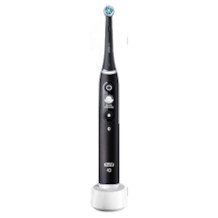
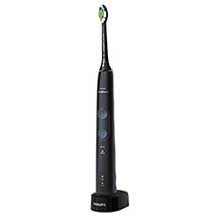
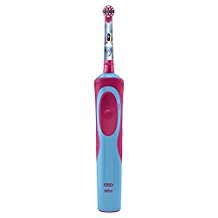
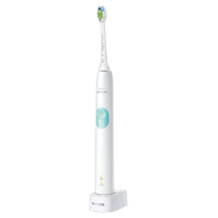
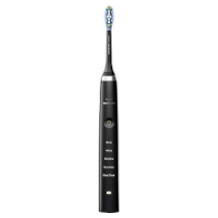
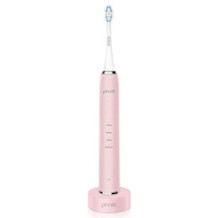
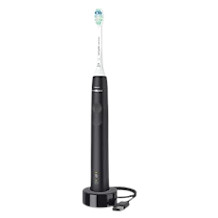
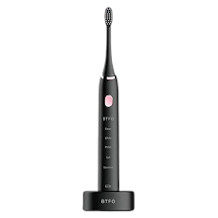
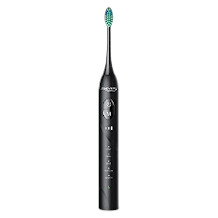

 20 reviews
20 reviews
